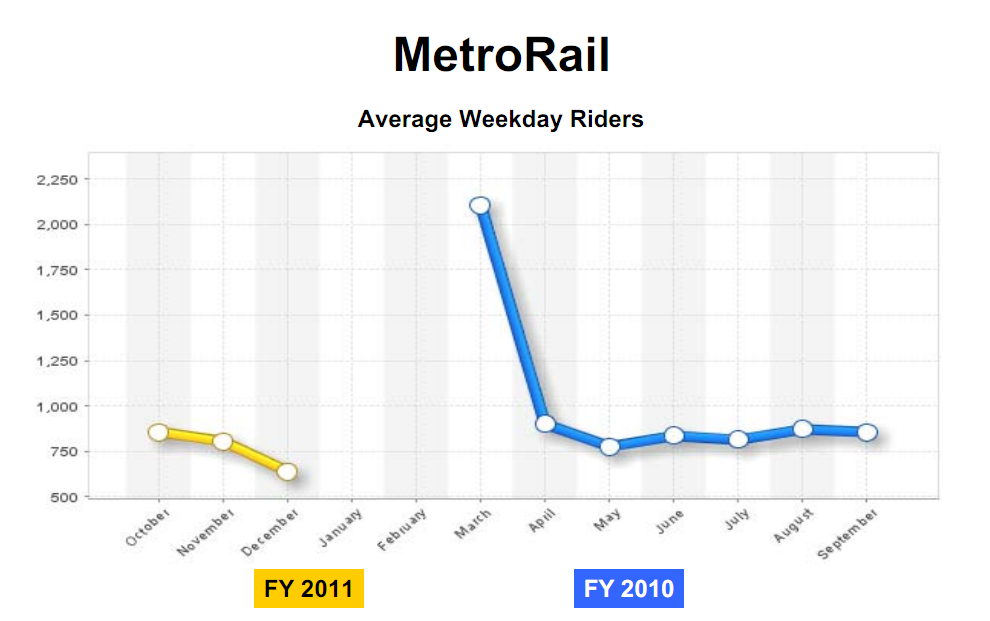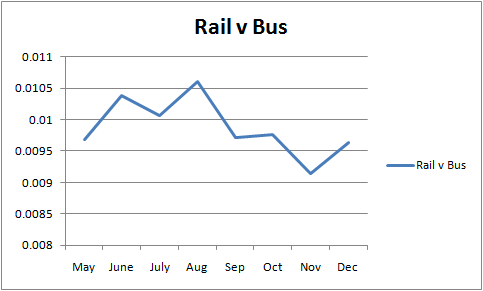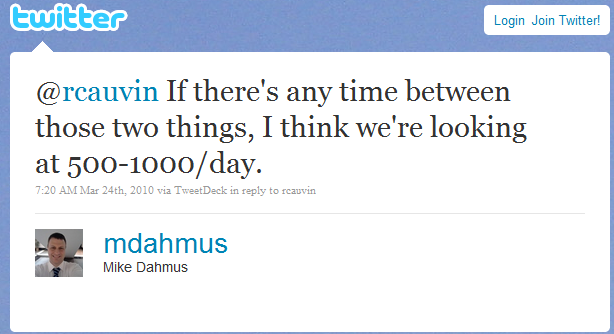Lots of people, including some of my favorite people at Capital Metro, are claiming that the Red Line is now “meeting projections”. Hmm. Let’s analyze this claim by looking at the archives, shall we?
1. The Red Line was opened up in 2009 – projecting 1700-2000 boardings/day, from Day One, with the following schedule:
This is the last monthly data we get before Big Changes make for a big discontinuity in the graphs. December is, as Capital Metro wants to make sure you know, low ridership month. As usual, click for larger versions. Analysis follows the pictures.
Rail first (image directly from Capital Metro):

Now rail vs. bus (this is the baseline that hopefully corrects for things like high gas prices or other factors that might raise overall transit ridership) (image from my spreadsheet):

Key take-aways from all of this:
1. Despite what they’re trying to claim now, Capital Metro projected 1700-200 boardings per day before any major changes; images below copied from their own minutes in February 2009:

[…]

2. My projection was 500-1000 boardings/day, same conditions:

Hey, decision-makers, which one of those guys should you be listening to now?
3. Conclusions we can draw so far: despite anectdotal (and desperate) tweets and facebook posts to the contrary from PR flacks and board members, ridership WAS NOT INCREASING AT ALL and was stuck in the 800-ish-boardings-per-day doldrums. This service was not winning hearts and minds; any claims to the contrary are completely contradicted by the actual boarding numbers.
Important notes going forward:
1. In January, Capital Metro eliminated some very popular express bus runs to drive more people on to the Red Line. Early indications were that this had limited success – with people complaining about crowded conditions on the one new route (#985) that replaced the two popular ones (#984 and #986), but I bet some people switched to the Red Line to avoid said crowding. This #985 bus was crowded despite the fact that it’s slower than the previous direct-from-park-and-ride services it replaced. (In other words, the 2 old buses were much faster than the Red Line while this new replacement service is only a little faster).
2. Capital Metro also consolidated a couple of peak runs – meaning that you’re more likely to see a ‘full’ train, because fewer trains are being run during rush hour.
3. Ridership is being goosed artificially. Any gains we see now are most likely not the result of people trying the service and loving it; or being convinced to ride during rush hour because of new midday service; they’re most likely the result of people who liked a competing service being driven here because Capital Metro made the competing service less competitive.